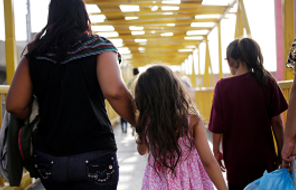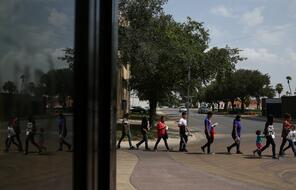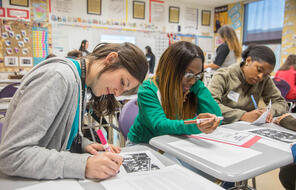
Haitian Migrants at the US–Mexico Border
At a Glance
Language
English — USSubject
- Civics & Citizenship
- History
- Social Studies
Grade
6–12- Global Migration & Immigration
Overview
About This Mini-Lesson
In September 2021, tens of thousands of migrants gathered under the Del Rio International Bridge in Texas seeking asylum or better living conditions in the United States. Many of these migrants were originally from Haiti but had been living in other countries prior to seeking entry to the United States. The Biden administration deported thousands of Haitian migrants from this makeshift camp using a provision from the 1944 Public Health Service Act, known as Title 42, which allows federal health officials to prevent people from entering the country during a public health emergency.
The Biden administration has faced criticism for the deportations since the Universal Declaration of Human Rights guarantees people the right to petition for asylum in other countries. In addition, conditions in Haiti are difficult and many of the Haitian migrants have been living outside of their country since the devastating 2010 earthquake in Haiti. The administration came under further scrutiny for the treatment of Haitian migrants after photos showed US Border Patrol agents advancing on migrants on horseback and appearing to use their reins as whips.
This mini-lesson uses images and firsthand accounts of Haitian migrants to humanize the events happening at the US–Mexico border and give shape and nuance to the news. It is designed to help students think about the causes of migration and consider ethical questions around migration.
Preparing to Teach
A Note to Teachers
Before teaching this mini-lesson, please review the following information to help guide your preparation process.
Lesson Plans
Activities
Extension Activities
Materials and Downloads
Resources from Other Organizations
Unlimited Access to Learning. More Added Every Month.
Facing History & Ourselves is designed for educators who want to help students explore identity, think critically, grow emotionally, act ethically, and participate in civic life. It’s hard work, so we’ve developed some go-to professional learning opportunities to help you along the way.
Exploring ELA Text Selection with Julia Torres
On-Demand

Working for Justice, Equity and Civic Agency in Our Schools: A Conversation with Clint Smith
On-Demand

Centering Student Voices to Build Community and Agency
On-Demand















